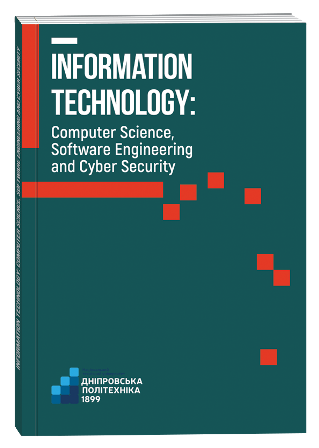CURRENT TENDENCIES IN MANAGEMENT AUTOMATION OF INFRASTRUCTURE AND APPLICATION CONTAINERIZATIONFOR CLOUD SYSTEMS
DOI:
https://doi.org/10.32782/IT/2024-2-17Keywords:
cloud technologies, management automation, Infrastructure as Code (IaC), containerization, microservice architecture, container orchestration platforms, monitoring and analytics, flexibility, scalability, reliabilityAbstract
Cloud technologies are transforming the IT landscape, offering organizations flexibility, scalability, and economic benefit. However, the effective use of clouds requires not only the implementation of appropriate platforms but also meticulous management of infrastructure and application containerization. This task becomes more complex with the growth of data volumes, scaling of information systems, and the dynamic development of modern information technologies. The purpose of the work. Management automation of infrastructure and application containerization can enhance the flexibility, expandability, reliability, and security of cloud systems, providing the organization with significant benefits. Thanks to automation,it is possible to reduce the risk of human errors in the process of deploying and updating services, speed up application deployment, improve monitoring of information systems, and simplify their scaling. The methodology. There are various practices and patterns to accomplish this, such as Infrastructure as Code (IaC), containerization, microservice architecture, container orchestration platforms, and various monitoring tools. Nevertheless, the choice of appropriate solutions primarily depends on the specific demands and resources of the certain enterprise. It is important to carefully assess these needs, select proper technologies and tools, and be stuffed with skilled experts for their introduction and support. The scientific novelty. The implementation of management automation of infrastructure and application containerizing is one of key success factors for organizations aiming to achieve effective use of cloud technologies. This tendency has significant development prospects. It is essential to keep up with current research in this field and to implement modern innovative investigation results. This will maximize the advantages of automation for improving operational efficiency and enterprise competitiveness in general. Conclusions. Currently, there is a certain number of technologies, the use of which allows the automation of infrastructure management and application deployment within cloud systems. However, each of them has its advantages and disadvantages. Within this study, the authors analyzed these existing solutions, made conclusions about the appropriateness of their application in accordance with the modern requirements of microserver architecture, and provided a reasoned basis for the development of improved models and information technology for the management automation of infrastructure and application containerization for cloud systems.
References
Murphy O. Adoption of infrastructure as code (iac) in real world. Ammattikorkeakoulut – Theseus. URL: https://www.theseus.fi/bitstream/handle/10024/786729/Thesis_Murphy_Olga_YTS20K1.pdf?sequence=2 (дата звернення: 10.04.2024).
Morris K. Infrastructure as code: dynamic systems for the cloud age. O’Reilly Media, Incorporated, 2021. 350 с.
Manvi S., Shyam G. K. Cloud computing. CRC Press, 2021. URL: https://doi.org/10.1201/9781003093671(дата звернення: 12.04.2024).
Lewis J., Fowler M. Netflix microservices report. martinfowler.com. URL: https://martinfowler.com/articles/microservices.html (дата звернення: 17.04.2024).
What is Terraform | Terraform | HashiCorp Developer. What is Terraform | Terraform | HashiCorp Developer. URL: https://developer.hashicorp.com/terraform/intro (дата звернення: 12.04.2024).
Ansible documentation – ansible community documentation. Ansible Documentation. URL: https://docs.ansible.com/ansible/latest/index.html (дата звернення: 11.03.2024).
Chef documentation. Chef Documentation. URL: https://docs.chef.io/ (дата звернення: 14.02.2024).
The Secure Shell (SSH) Transport Layer Protocol. IETF | Internet Engineering Task Force. URL: https://www.ietf.org/rfc/rfc4253.txt (дата звернення: 01.12.2023).
Beginners track – what is docker?. dockerlabs. URL: https://dockerlabs.collabnix.com/beginners/docker/what-is-docker.html (дата звернення: 06.01.2024).
Overview. Kubernetes. URL: https://kubernetes.io/docs/concepts/overview/#why-you-need-kubernetesand-what-can-it-do (дата звернення: 22.03.2024).
Red Hat OpenShift enterprise Kubernetes container platform. Red Hat – We make open source technologies for the enterprise. URL: https://www.redhat.com/en/technologies/cloud-computing/openshift (дата звернення: 03.04.2024).
Gittlen S., Rosencrance L. What is identity and access management? Guide to IAM. Security. URL: https://www.techtarget.com/searchsecurity/definition/identity-access-management-IAM-system (дата звернення: 04.04.2024).
Manvi S. S., Shyam G. Cloud computing. Taylor & Francis Group, 2021.
Arundel J., Domingus J. Cloud native devops with kubernetes: building, deploying, and scaling modern applications in the cloud. O’Reilly Media, Incorporated, 2022.
In search of cloud value: Can generative AI transform cloud ROI? / C. Arora et al. McKinsey & Company. URL: https://www.mckinsey.com/capabilities/mckinsey-digital/our-insights/in-search-of-cloud-value-cangenerative-ai-transform-cloud-roi (date of access: 10.04.2024).







